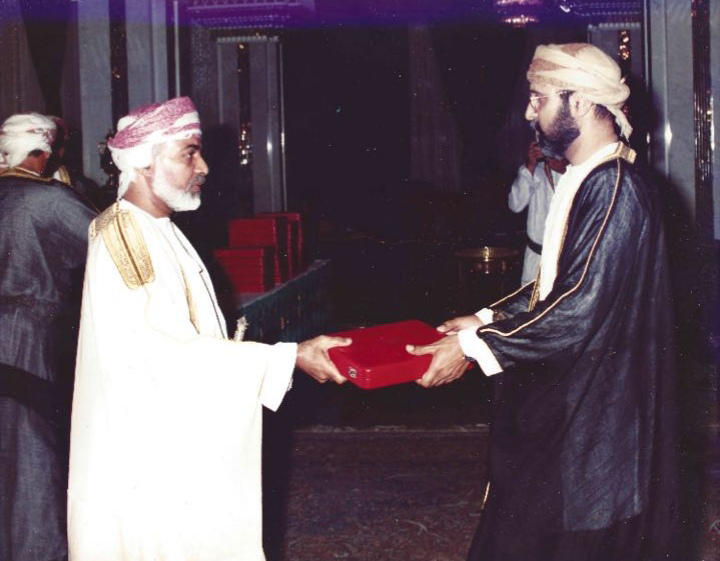

For admirers o f modern art, one of the most eye-catching paintings in Hussain’s living room is an abstract portrait of an Iranian woman by Tehrani artist Neda Moin Afshari. Expressive lines, swipes, curls, and washes of black, red, and green hint at the outline of her body, sitting with her legs gracefully crossed, leaning forward slightly with her head propped up on her elbow.
A large diptych- or painting on two canvases – hangs behind a protective sheet of glass in Hussain’s foyer. Thick gobs of paint merge on the canvas in an abstract cacophony of color, loud and chaotic, but placed with clear intent. Layers of wadded paper blend with the paint, adding a stronger 3D effect and fueling a desire in some to reach out and run one’s fingers over the surface.
One of the special Omani pieces Hussain has is a bronze sculpture called “Horse Rider” by Saud Al Hunaini, a self-taught artist known for his stunning, highly realistic paintings of camels, horses, landscapes, and portraits, including almost photographic portraits of His Majesty Sultan Qaboos.
Bewick has explored a variety o f media including oil painting, pastels, sculpture, and textiles, but she is best known for her watercolors. Her adventurous c h i l d h o o d shaped her adulthood as she continued to travel widely. Her work reflects her travels throughout Ireland, Wales, England, Italy, Greece, Turkey, China, the South Pacific, and more.
A black curtain embroidered with calligraphy which hangs over a door inside the Holy Kaaba in Mecca. The gold-coated door, called the Bab AL Tawba (Door of Repentance), leads to a marble stairway that provides access to the roof of the Holy Kaaba. Since the early 19th century AD, the door has been covered with a curtain covered in Ayaat, or verses from the Holy Quran. The one which Hussain has is made of black wool with the Ayaat calligraphy embroidered in silver and gold thread

